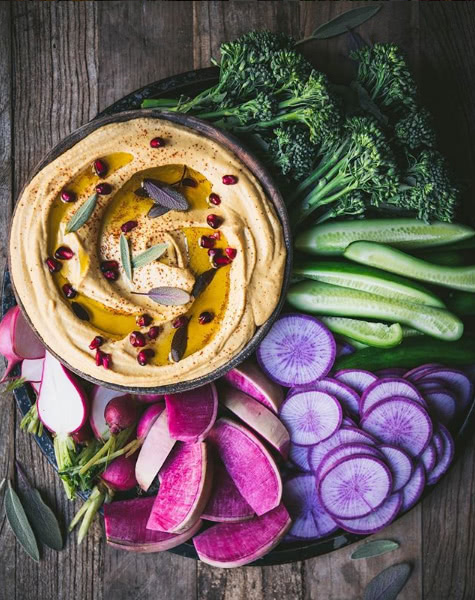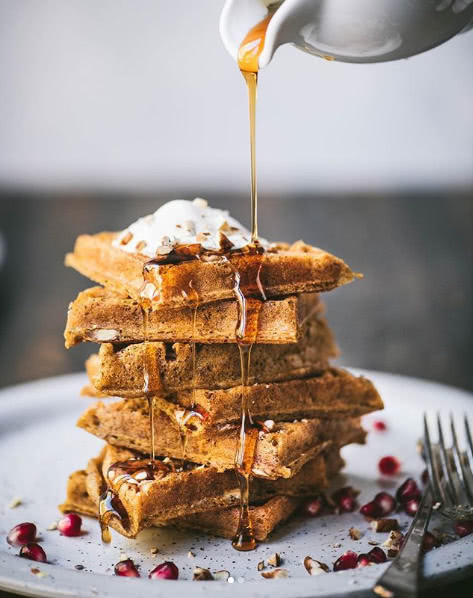Food Photography Tips
Mục Lục
Food Photography Tips
Whether you are looking to improve your food business’s Instagram or are updating your restaurant’s website, knowing how to take quality food photos can help your business evolve. Not only can attractive and unique photos entice potential customers and bring back regulars, they also can enhance your brand and leave an impression. Learn how to improve your food photography skills with our tips below.
7 Expert Tips to Improve Your Food Photography Techniques
We asked the mother-daughter duo of the blog Crowded Kitchen, Beth and Lexi Sinclair, to share with us their expert food photography tips. Below are 7 food photography tricks and tips, so you can take high-quality food photos for your business.
About Crowded Kitchen
Lexi and Beth are dedicated to unifying people with dietary differences to continue enjoying meals together. Their blog is full of delectable recipes that cater to different diets, and their website and Instagram have tons of enticing photos of their culinary creations. Having gained over 70k Instagram followers in their first 3 years, Crowded Kitchen has succeeded in capturing eye-catching, mouthwatering images by developing their food photography techniques.

Crowded Kitchen
1. Lighting
Crowded Kitchen emphasizes that food photography lighting should help your food retain its natural hues, creating a high-quality, realistic food photo.
- “We shoot all of our photos in natural light next to a large window that doesn’t get much direct sunlight, so we avoid harsh shadows that may mask too much of the dish,” says Lexi.
- Avoid fluorescent and other indoor lighting, as this tends to change colors and tones.

Crowded Kitchen
2. Angles
Trying out different angles is important to capture the attractive and distinctive components of varying types of food.
- The angle you choose should accentuate the unique elements of the type of food you’re shooting. Pay attention to how the food’s texture, color, and composition appear based on different angles.
- For example, a plate of food might be best shot overhead, per Crowded Kitchen. Because the arrangement is flat, this enables the viewer to see the array of foods on the plate.
- Taller dishes, such as a burger or stack of pancakes, look best at a 45-degree or straight-on angle, advises Lexi. In this way, you can see the layers, making it look more appealing and abundant.

Crowded Kitchen
3. Action
“It definitely depends on the dish, but the most mouth-watering food photos typically involve some action and life; in other words, a photo that makes you feel like you could reach out and grab whatever is in the photo,” says Lexi.
- To produce a dynamic photo, Crowded Kitchen tries to create a scene or incorporate movement.
- For example, Lexi points out that “when shooting waffles and pancakes, the best shots are always action shots of pouring maple syrup or even dusting powdered sugar.”
- Other ideas for action shots include the following: a hand sprinkling on a garnish, liquid pouring into a bowl, cup, or onto a dish, a hand holding a spoonful of a dip about to be placed, or hands holding finger-food items.

Crowded Kitchen
4. Editing
“It’s crazy how much of a difference quality editing makes, and it’s really what makes your photos stand out on a social media feed,” remarks Crowded Kitchen.
- To enhance your photos, Crowded Kitchen recommends learning how to use Lightroom, Photoshop, or another similar editing platform.

Crowded Kitchen
5. Staging
Your food photography setup shouldn’t be overwhelming and instead should complement the food. “Styling is important, but it’s also important not to style too much,” advises Lexi.
- Trying out different props and backgrounds is a good way to see what you like best, recommends Crowded Kitchen.
- When they first started out, they used different surfaces around the house (ex: tables, countertops), picked up tile and wood samples at a local hardware store, and found props at flea markets and antique stores.
- To create a presentation and surround your food item(s), try including a garnish, ingredients, flowers, tablecloths, unique dinnerware and flatware, or colored items that accentuate the food.

Crowded Kitchen
6. Brand
Your social media content is an opportunity to create an impression of your brand without even stepping foot into your restaurant. If you do not have a brick-and-mortar location and are a ghost restaurant or a food blog, like Crowded Kitchen, this makes your content all the more important. For this reason, it is important to maintain a cohesive look that is indicative of your brand on your Instagram, website, Facebook, and other platforms.
- Over time, your food photos become part of your brand’s story.
- Adhering to your brand for all of your photo elements, especially staging, helps create consistency and authenticity.
- Crowded Kitchen incorporates their personality into their photos: “We try to achieve a natural, slightly messy look in our photos to reflect who we actually are as cooks!”

Crowded Kitchen
7. Inspiration
“We highly suggest studying a few of your favorite food photographers and taking time to examine every element of your favorite food photos – lighting, styling, cropping, editing, placement, and more. Doing this can help you learn what kind of style you’re looking to achieve in your own photos,” recommends Lexi.
Investing time and energy into your food photography skills is one way to improve your restaurant’s marketing strategy. With such an expansive amount of food, backgrounds, and various photography elements to play around with, your creativity can flourish while bringing in new customers and bringing back regulars.















![Toni Kroos là ai? [ sự thật về tiểu sử đầy đủ Toni Kroos ]](https://evbn.org/wp-content/uploads/New-Project-6635-1671934592.jpg)


